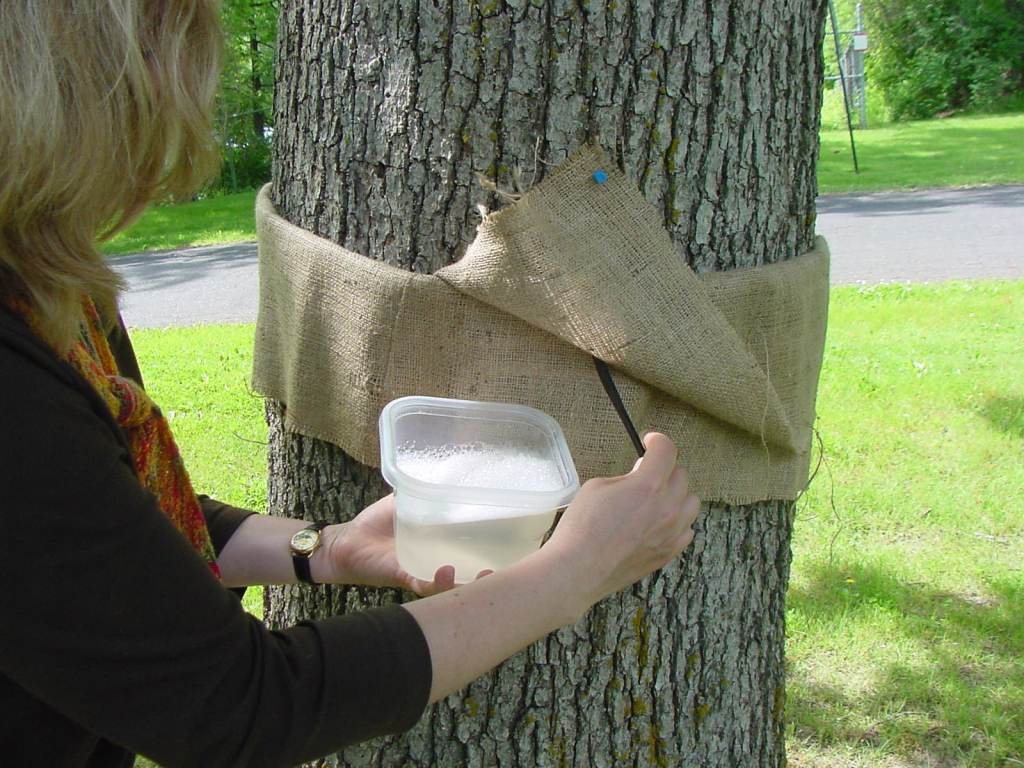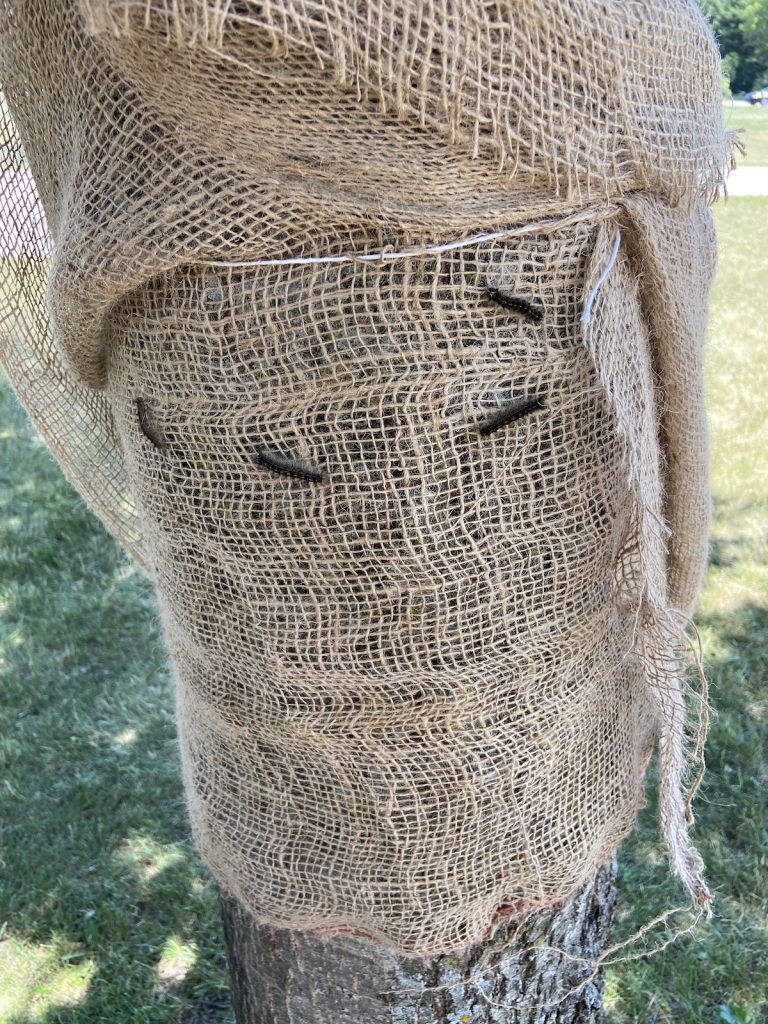After spongy moth (Lymantria dispar) caterpillars get about an inch long in mid-June, they will move down the trunk to hide from predators during the day. You can take advantage of this behavior to trap and reduce the number of larvae on the trees in your yard by making a burlap barrier band trap. To make a band, cut a strip of burlap 12-18 inches wide and long enough to reach around the tree and overlap a few inches. Tie a string around the center of the band and allow the top six inches to flop over to make a two-layered skirt. Tie the band around the tree above the sticky band (if you have one in place). Check the bands every day in the afternoon (early afternoon – 6 PM). If you find any adults or pupae on your trees, you can also kill them by placing them in the container of soapy water. Once the insects are dead, drain off the water and throw the insects in the trash. Take the burlap bands down in August.
NOTE: Spongy moth caterpillars are covered with fine “hairs” (setae) that can cause both skin and respiratory irritation. Avoid touching caterpillars bare-handed; disposable gloves, forceps, or other tools are recommended to knock caterpillars into a container of soapy water. Setae can remain in clothing, so fabric gloves or clothes that have contacted spongy moths should be washed separately. If skin irritation occurs, consult a physician for advice on topical medications to relieve irritation.
At chest height, wrap a 12 – 18 inch tall piece of burlap or light colored cloth around the tree and fasten it with twine around the middle.
Fold the top half of the burlap over the twine and over the bottom half of the burlap to create a “skirt”.







